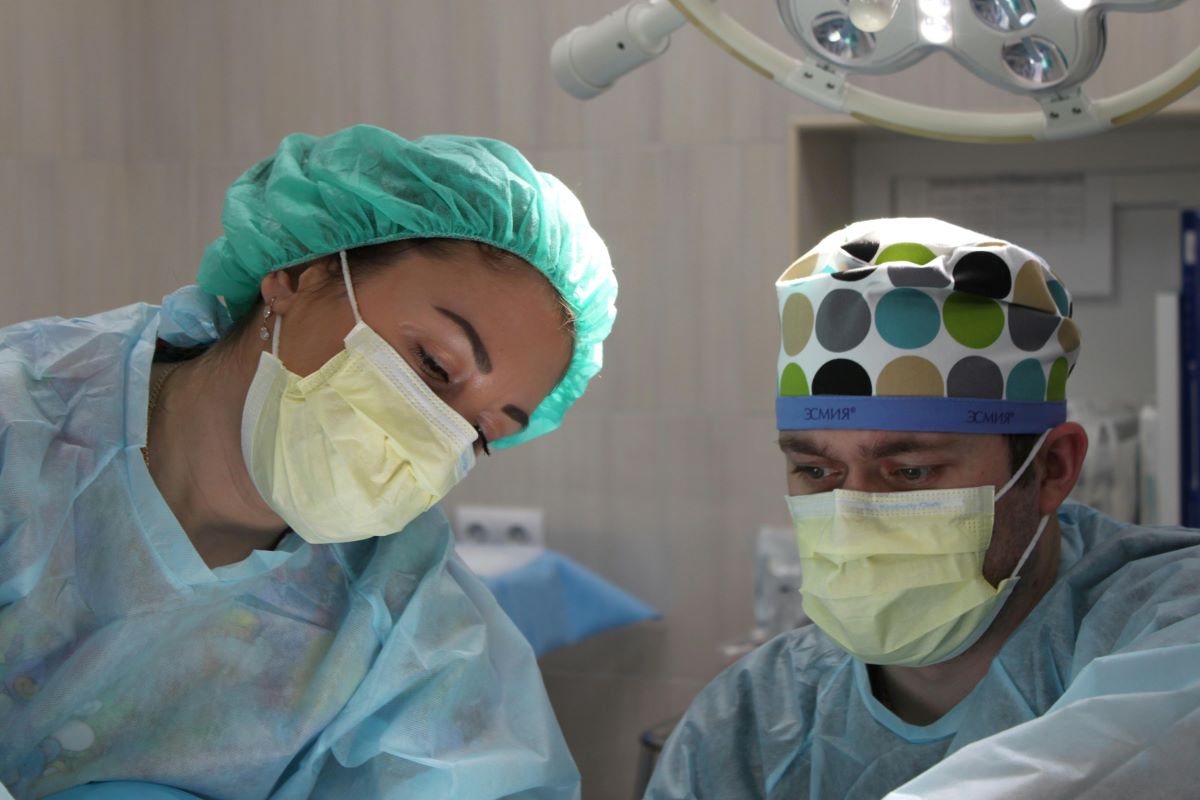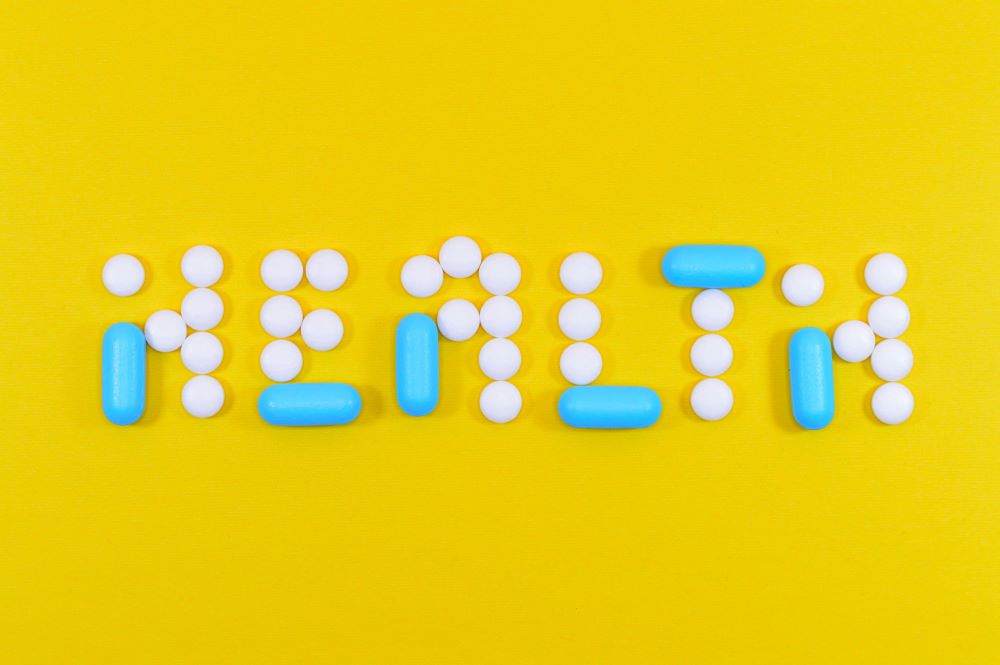Titration: Strong Acid/Base lab report
PRE-LABORATORY ASSIGNMENT
Finish the pre-laboratory assignment before beginning the experiment.
- 10 mL of M HCl solution is mixed with 150 mL of water to make a new HCl solution. What is the pH of the resultant solution? Justify your answer.
- Let’s prepare an H2SO4 solution by dissolving 4.9 grams of H2SO4 in 100 mL of water.
- How many H2SO4 molecules are in this solution?
- What is the molarity of the solution?
- What is the pH of the solution?
- What is the pH of the solution if 3.0 grams of NaOH are added to the solution?
Note: Sulfuric acid (H2SO4) is a diprotic acid. The dissociation constant of the first proton (H+) is significantly larger than the second H+ dissociation. So, the pH of such a solution is mainly contributed by the first proton dissociation, while the second proton dissociation will provide some modification to its pH value. If you haven’t learned polyprotic acids yet, consider one H+ dissociation is enough to be awarded full credit.
PURPOSE
An acid-base titration is an analytical method used for determining the amount of acid or base in a sample solution. This experiment will introduce students to titration techniques, using pH meters, and practicing all related laboratory techniques to determine the concentrations of acid/base solutions.
- Students will titrate hydrochloric acid (HCl) with NaOH solution.
- Students will learn to perform titration using an indicator, use a pH meter, and construct titration curves.
BACKGROUND INFORMATION
pH Scale
The pH scale is the standard measure of how acidic or basic a solution is. Based on hydronium (H+) concentration, the pH value is on a log scale. As a result, a solution with a pH of 6 has ten times the H+ concentration than a solution of pH 7. pOH is on a log scale of hydroxide (OH–) concentration, leading to the definitions
(1)
(2)
A neutral solution has a pH = 7.
Distilled water is a natural solution with pH = 7 due to the fact that
(3)
If [H+] > [OH–], then the solution is acidic with pH < 7; otherwise, the solution is basic, pH > 7.
Strong Acids
Strong acids and strong bases ionize in water almost entirely. For example, a strong acid (HA) in water will yield nearly 100% ionization in the solution
(4)
Note the single right arrow in Eq. (4). This reaction is considered complete, not an equilibrium between the two sides. For example, if you titrate a 1.0 M HCl solution with a 1.0 M NaOH solution, the HCl solution is ionized completely in solution
(5)
The HCl solution has an initial pH = 0 due to its complete ionization [HCl] = [H+] = 1.0 M.
In titration with NaOH solution, H+ ions react completely with OH– ions to form water molecules. The salt NaCl produced during the titration process does not affect the pH of the solution. The pH value of the solution steadily increases, determined by calculating the remaining concentration of acid after accounting for the neutralization with NaOH.
Indicator
An indicator (HIn) is a soluble dye that will change color over a narrow range of pH values. For example, Litmus changes color in a solution, from red indicating acid to blue indicating base.
Indicators should be in a low chemical concentration to have minimal effect on the pH value of the chemical solutions to be tested. In water, a pH indicator will reach the equilibrium such that
(6)
The corresponding equilibrium constant is given by
(7)
An alternative arrangement yields
(8)
The hydronium concentration [H3O+] has a higher value than Ka in acidic solutions. The color turning point of an indicator from one color to another is at [HIn] = [In-] so that [H3O+] = KIn.
The Phenolphthalein Indicator is one of the most popular indicators used for strong-acid/strong-base titration in a general chemistry laboratory. In acidic solutions, phenolphthalein is colorless, and it turns to a pink color inside basic solutions. The equivalence point occurs at pH = 7 when the acid solution turns colorless to slightly pink during titration with a basic solution.
Acid/Base Titration with Phenolphthalein Indicator
If determining the concentration of an unknown acidic solution is the only purpose of the experiment, it is achievable using a pH indicator through titration with or without a pH meter.
Students often perform strong-acid/strong-base titration using a phenolphthalein Indicator without a pH meter to determine the hydronium concentration [H3O+] at the equivalence point. Invoking the relation at the equivalence point
(9)
From there, we obtain the initial concentration of the acidic solution
(10)
In the equation above, Cacid and Cbase are acid-base concentrations; Vacid and Vbase are the volumes of the acid and base, respectively.
pH Meter
A pH meter is an analytical instrument that measures the voltage between a reference electrode and a glass electrode sensitive to [H+].
The glass electrode consists of a tiny (thin) bulb of a special glass filled with a solution of definite pH and is permeable to H+ ions. When placed in a solution of different pH levels, the electrode develops an electric potential indicating the difference in [H+] on opposite sides of the glass membrane, providing the magnitude of the electric potential when connected to an electronic voltmeter. The pH meter has temperature control to compensate for the temperature of the solutions.
The glass film of the electrode is thin and fragile. Never push the end of the electrode against the bottom of a beaker or any other hard surface. When the electrode is not in use, keep it immersed in a buffer solution or water. An obvious advantage of the pH meter over indicators is its ability to give pH values, thus permitting titrations of colored solutions for which pH indicators are less helpful.
Acid/Base Titration with pH Meter
A pH indicator is unnecessary when using a pH meter for titration to determine the equivalence point. Nevertheless, it could be fun to use it as a double-check.
The titrated solution’s pH changes rapidly near the equivalence point, as shown in Figure 1. For a small enough volume change ΔV, the first derivative of the pH, d(pH)/dV, may be well approximated by a difference ratio, D(pH)/DV,
(11)
Where in Eq. (11), we have
(12)
(13)
Vn is the total volume of the titrant used after the nth addition, and (pH)n is the pH value of the solution titrated after the nth addition.
Figure 1: A schematic plot of a titration curve in pH as a function of the titrant volume.
At the equivalence point, the first derivative of pH as a function of the titrant volume, d(pH)/dV, is at its maximum, as shown in Figure 2.
Figure 2: A schematic plot of the derivative of pH as a function of titrant volume.
During the experiment, students should read the buret to 0.02 mL. A plot of [D(pH)/DV vs. V] will clearly define the equivalence point of the titration and determine the volume of base added at the equivalence point, Ve, as shown in Figure 2.
MATERIALS
The following materials are essential in this experiment.
- pH meter and electrode assembly
- Magnetic stirrer and magnetic stir-bar
- Stir-bar retriever
- 10-mL beaker
- 250-mL beakers
- 250-mL Erlenmeyer flasks
- Two burets and buret reader
- 25-mL pipette
- Wash bottle (distilled H2O bottle)
- NaOH solution (with known concentration provided in lab)
- HCl solution (unknown concentration)
- Phenolphthalein indicator
SAFETY
Wear safety goggles at all times in the laboratory.
- This experiment uses strong acids/bases solutions. The acids used in this experiment have different concentrations. Even though the HCl and NaOH solutions from this experiment have a relatively low concentration, usually somewhere between 0.10 M and 0.30 M, be careful in handling them. Wear gloves when handling the acids and bases.
- Wipe off any spills immediately. Avoid contact with eyes and hands.
EXPERIMENT
Students work in pairs in this experiment.
Preparation
Prepare ahead of time and understand which steps can be and should be in the experiment sequence. The titrations are quantitative and require detailed attention, and a review of the application of volumetric glassware is necessary.
Notebook Preparation
In this experiment, students need to gather redundant data from measurements and plan and prepare tables ahead of time for data collection.
- For titrations of HCl against NaOH that do not involve the use of a pH meter, prepare in laboratory notebook the following table:
| Run | Initial Buret Reading (mL) | Final Buret Reading (mL) | ΔV (mL) |
| 1 | |||
| 2 | |||
| 3 | |||
| Mean |
- For titration of HCl against NaOH by a pH meter, prepare in the lab notebook the following table. This table needs to allow at least one notebook page for the entries.
| Vbase (mL) | pH of Solution | ΔV (mL) | ΔpH | ΔpH/ΔV (mL)–1 |
| … | … | … | … | … |
Lab Technique Demonstration
The laboratory instructor shall demonstrate the following techniques to students:
- Use a pH meter and handle the electrode (before and after use).
- Use a pipette for solution transfer.
- Handle a buret, such as filling up, tightening the stopcock, eliminating bubbles below the stopcock, using the stopcock, and reading the solution level in the buret.
Calibration of the pH Meter
Analytical instruments can rarely provide exact or accurate measurements without proper calibration. Before being used for experimentation, calibration of the devices to some standard is necessary. For example, we must calibrate the pH meter with known pH value buffer solutions.
Because the measurement is also affected by temperature, adjusting the pH meter for daily laboratory temperature may be necessary. In recent years, the newly developed modern pH meters may have some self-justification functionality for temperature.
To calibrate a pH meter, students should first obtain a pH meter, a glass electrode assembly, a 10-mL beaker, and a set of buffer solutions (three at least). Remove the shorting connector from the pH meter by twisting it counter-clockwise and then pulling it off. After the experiment, connect the connector of the glass electrode assembly to the unit by following the reverse procedure in the preceding step. Please Consult the corresponding user manual or ask the lab instructor to calibrate different pH meters.
Using a 10-mL beaker, rinse it twice with 1–2 mL of buffer solution. Then, add about 5.0 mL of the buffer solution to the beaker cup and record the pH value of the buffer solution.
Wash the bulb portion of the electrode assembly with a stream of distilled water from a wash bottle. Gently shake off the water. Using a Kimwipe, carefully dry the electrode assembly. Avoid touching or putting too much force on the glass bulb when wiping.
Place the 10-mL beaker under the electrode and lower the bulb carefully into the buffer solution inside the beaker cup. Swirl the beaker for a few seconds to ensure that the buffer solution replaces the water film on the glass bulb.
If needed, determine the room temperature (from a barometer) and turn the temperature dial until the indicator mark coincides with the temperature reading. Following the instructions on the pH meter screen until the pH reading corresponds to the pH of the buffer is stabilized. Now, the pH meter calibration with this buffer solution is complete.
From this point, do not turn off the pH meter until you finish the experiment. If it is turned off by accident, the pH meter needs to be re-calibrated. If the calibration set is subsequently changed, a recalibration of the meter will be necessary.
Store it in distilled water inside a beaker when the electrode is not in use.
Titrations of HCl against NaOH without a pH Meter
This part of the experiment includes two titrations of HCl against NaOH without using the pH meter.
Setting up the Buret
Use a wax pencil or a marker to mark “NaOH” on a clean, dry 250-mL beaker. Measure out about 200 mL of NaOH solution into this beaker. The 200 mL of NaOH solution is all you need for the whole titration experiment. Please be careful not to spill or discard it by mistake. Record the concentration of the NaOH solution in your laboratory notebook.
A standard laboratory practice for overnight storage of a ready-to-use buret is to keep it filled with distilled water. The buret assigned for you to use is pre-filled with water. Remove the water from the buret.
If the buret has any white solid inside, it means that there might be some leftover NaOH from its last use. To clean up the leftover chemicals, you should simply rinse the buret twice, each time with 5–10 mL of distilled water, and rinse the buret another two times, each time with 2–3 mL of NaOH solution. Fill the buret with the NaOH solution to at least 2.0 inches above the 0.00 mL mark. Dispose of the NaOH rinses in the appropriate waste container.
Position the NaOH beaker underneath the buret and, via the stopcock, let out excess NaOH into the NaOH beaker rapidly until the air bubble under the stopcock disappears. Let the NaOH solution out slowly until the buret level reaches the 0.00 mL mark or just below the mark. Wait 10 seconds, remove the NaOH beaker, and record the initial buret reading in your laboratory notebook.
You may spend time and practice using the stopcock efficiently, controlling the drop rate, etc. Remember that whatever you do, you must return the buret level to/near the 0.00 mL mark, as discussed earlier, before beginning the titration.
Place the 250-mL beaker containing the HCl solution on a stirrer; the solution is to be titrated.
Add HCl solution to the second buret on your bench. Use the same procedure as described for the NaOH buret. Be sure to indicate which buret contains acid and which contains the base. If you over-shot an endpoint during the NaOH titration against HCl, you may consider back titration with HCl solution in the second buret. The volume of HCl used in the titration is then the 25 mL aliquot initially in the flask plus the newly added to the flask from the second HCl buret due to the back titration.
Preparing the HCl Solution
In a 250-mL beaker, place approximately 150 mL of HCl solution.
Using a pipette, measure out a 25-mL aliquot of the HCl solution to a clean 250-mL beaker. Then, add the 25-mL HCl solution, 75 mL of distilled water, 3–4 drops of phenolphthalein indicator, and a magnetic stirring bar.
Titration and Data Recording
Place the beaker with the HCl solution on the stirrer. Turn on the stirrer and adjust the control until a small vortex appears in the solution. Record the initial buret reading and indicator color (or lack thereof) in the HCl solution.
Now, you may start the titration. Start adding the NaOH solution from the buret to the HCl solution reasonably. Do not titrate too quickly. If you do, some aqueous droplets may cling to the inner wall of the buret and prevent an accurate volume reading. If you need to, check with your laboratory instructor on how fast is proper for titration.
Near the equivalence point, a slightly pink color will appear and persist for a few seconds after adding each drop of NaOH solution. At this point, you should slow down titration and start adding NaOH from the buret dropwise. When reaching the equivalence point, the HCl solution under titration imparts a slightly pink color that persists for a minimum of 30 seconds. Record your experimental data, the buret reading, color observations, etc., in your laboratory notebook.
After the titration, turn off the magnetic stirrer. Use the stir-bar retriever to remove your stir bar from the beaker. Rinse it and set it aside to be used for the next run.
Carefully read the disposal instructions. At your sink, rinse your beaker a few times with tap water, then distilled water.
Rerun: Repeat the above titration procedure one more time. Each partner should titrate at least once. Remember to refill the buret with the NaOH solution to the 0.0 mL mark before each titration.
Titration of HCl against NaOH using a pH Meter
You will titrate HCl against NaOH using a pH meter in this part of the experiment. Even though the phenolphthalein indicator is unnecessary for this part of the experiment, you may use it anyway to double-check the titration equivalence point.
You must refill the buret with the NaOH solution before each new titration and fill it above the 0.0 mL mark. Let out the NaOH solution carefully until the buret level is at or slightly below the 0.0 mL mark and there are no air bubbles below the stopcock.
Into a clean and dry 250-mL beaker, add the 25-mL aliquot of the HCl solution, 75 mL of distilled water, 3–4 drops of phenolphthalein indicator, and the magnetic stir-bar.
Place the beaker of the HCl solution on the stirrer. Turn on the stirrer and adjust the speed control until a small vortex appears in the solution.
The glass electrodes are pre-stored in a beaker with a buffer solution. Obtain a glass electrode from its holder, thoroughly rinse the glass bulb and surrounding plastic components with distilled water, and dry the assembly with a Kimwipe.
The electrode should be positioned in the beaker to avoid an impact of the stir-bar on the electrode. One way to set the electrode is to rest the upper body of the electrode against the lip of the beaker cup and place the glass electrode into the beaker so that the magnetic stir bar will not touch the glass bulb when it is spinning. Ask your laboratory instructor to show you how to “position the electrode” if needed.
Be sure the pH meter reading corresponds to the expected pH of the HCl solution. If not, check with your laboratory instructor. Sometimes, recalibration of the pH meter may be necessary.
Record the initial buret reading in the lab notebook to the nearest 0.02 mL. Also, record the initial pH reading and the color of the HCl solution.
You may begin the titration by adding the NaOH solution from the buret until the pH changes by about 0.3 units. As you go along, plot the volume of NaOH added versus the pH of the solution. A fast plot may be helpful to see the tendency of the titration curve. Record the buret reading, pH reading, and solution color if there are any colors.
Again, add the NaOH solution until the pH changes by about 0.3 units. Record the buret reading to the nearest 0.02 mL and the pH reading. Continue the titration in this manner until the pH is around 5.5 or higher.
Sometime after reaching the pH of 5.5, the pH of the solution will quickly change even if you add only 1–2 drops of the NaOH solution. Even a fraction of one solution drop will rapidly shoot the pH reading upward near the equivalence point. Therefore, near the equivalence point, you need to add the NaOH solution dropwise and record the pH after each drop. Record the buret readings and pH readings in your laboratory notebook. You should be especially careful as you approach the equivalence point. A lack of attention to detail will cause you to overshoot the equivalence point. If you do, you will have to ask your laboratory instructor if you could start the experiment over.
After the endpoint, proceed in increments of 0.3 pH units until reaching a pH = 11. Then, add more NaOH until the pH = 11.5 ± 0.2. Record the buret reading to the nearest 0.02 mL and the actual pH reading, i.e., somewhere in the interval of pH = 11.5 ± 0.2.
Note: some people may tend to overkill in recording, i.e., for every drop they add, they will record everything, which is only a waste of time. You should add dropwise and check the pH reading, but only record the buret and pH readings when the pH has changed by 0.3 units.
Rerun: No need to rerun by pH meter.
After the Titration
Turn off the magnetic stirrer. Remove and rinse the electrode assembly thoroughly with distilled water. Use a stir-bar retriever to remove the magnetic stir-bar from the solution.
If you have accidentally dropped a stir bar into the waste bottle, you must use the magnetic stir bar retriever to fish it out. Wash it clean and return it to the laboratory instructor.
WASTE DISPOSAL
Carefully read the disposal instructions and follow proper waste disposal procedures:
- Place the solutions from all titrations into the Neutralized Waste bottle.
- Dispose of any leftover acidic solution or rinses in the Acid Waste bottle.
- Dispose of any excess basic solution or rinses in the Basic Waste bottle.
HOUSEKEEPING
Housekeeping duties will include the following steps. Improper or unfinished housekeeping duties may lead to a loss of points.
- Thoroughly rinse the buret with tap water and two final rinses with distilled water. Fill the burets above the 0.0-mL mark with distilled water and leave the burets filled with distilled water on the buret holder.
- Rinse the pipette thoroughly with distilled water using the wash bottle. Return the pipette to the center bench.
- Make sure to turn off the magnetic stirrer and the pH meter.
- Remove both of the line cords from the electrical outlets. Remove the glass electrode assembly from the pH meter and reconnect the shorting connector.
- Return the pH electrode assembly and magnetic stir bar to your laboratory instructor.
- Wipe off (wet) any spills on your assigned counter and any other space you and your partner may have used. Return your glassware to your drawer.
REPORT
A laboratory report should include but is not limited to the four essential parts: introduction, experimental procedure, data analysis, and discussion. Also, list all the references if you have used any. Additionally, you may need to answer some added questions by the end of the discussion section.
Each student should prepare an independent laboratory report. Briefly summarize the essential reactions and concepts associated with the experiment and include the following data and analysis.
Data
Include in the lab report all recorded experimental data and organize it in an easily readable format.
- For your benefit, show the laboratory instructor your plots of [D(pH)/DV V] so that the laboratory instructor may check to see if you have correctly graphed the experimental data.
- Briefly summarize the essential reactions and the concepts associated with the experiment. As usual, each partner prepares a separate laboratory experiment report.
- State only changes from the manual, if any, in materials used, preparation, and procedures employed.
Analysis
Data analysis should include the following parts:
- Plot pH vs. VNaOH for titration against HCl. Be sure to label the plots properly.
- Plot [D(pH)/DV V] near the equivalence point for titration against HCl using a pH meter.
- Find the value when D(pH)/DV reaches its maximum, i.e., obtain VNaOH at the equilibrium point.
- Calculate the initial acid concentration, [HCl], for titration without a pH meter.
- Calculate the initial acid concentration, [HCl], using a pH meter for titration.
Discussion
Include in the discussion the following questions:
- Many pH indicators do not change colors at pH = 7. Why might a chemist want a pH indicator that turns color at pH = 9 to 10 in a titration of an acidic solution with a basic solution?
- Why did we use pH = 7 for the equivalence point for titration of HCl versus NaOH











